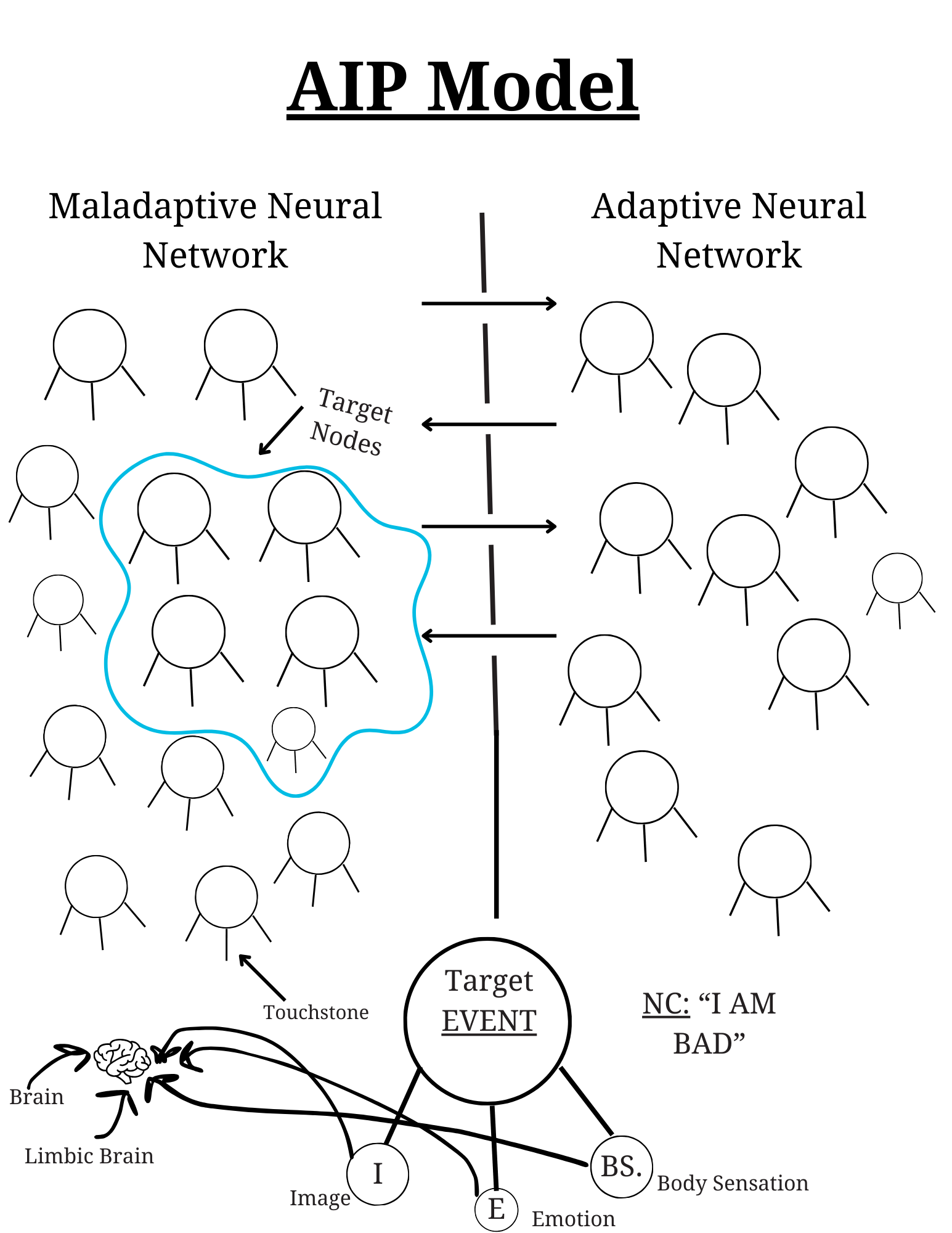Because as EMDR therapists we use the AIP model to guide our treatment approach, it helps to have a basic understanding of it and how it works. While the neurology behind EMDR processing can be very complicated, even a simple understanding of it can help guide the processing.
I came up with this diagram while I was playing with the EMDR Standard Protocol and trying to find a way to sketch it out. Starting with the target event, that is, the life experience that will be processed, we see that the Image, Emotion, and Body Sensations are all attached to it, or come out of it. Those are the memories that are stuck or frozen – not metabolized – in the limbic brain that need to be processed because they are under the surface activating and/or dysregulating the autonomic nervous system (NS).
to be processed because they are under the surface activating and/or dysregulating the autonomic nervous system (NS).
It is interesting to consider how negative cognition (NC) is developed and when it gets linked to memory. Because it is a thought that comes from the neocortex, and because the neocortex is offline during the activating event, means it must be determined by the unconscious mind, after the fact. In turn, it must be based on the Image, Emotion, and Body sensation, that is, the “Felt Sense” that is stimulated by the event.
The diagram shows that the memories from the event, that is, the Image, Emotion, and Body Sensations, are stored, or better yet “linked in” – in the limbic brain. That means they are below the level of thought (unconscious) and easily activated. In addition, they are stored in “neural networks” that, on the maladaptive side, are stuck or frozen in time, which is what makes them maladaptive.
It makes sense that the maladaptive network and adaptive networks work the same way in that they link memories – images, emotions, and body sensations. One difference is that the maladaptive networks are dysregulating and the adaptive networks can be regulating – that is, used to calm and settle the NS.
So, the chart shows that the target memory is located in the maladaptive neural network, and then with EMDR processing the memories are resolved, metabolized, or digested, that is, no longer stuck or frozen, linked to time and space and in this way are linked into the adaptive neural networks.
A final note is that I developed this chart to show to clients as a way to explain how EMDR works. Some like it and understand it and some don’t care but in any case, it helps to explain what we’re doing and why we’re doing it.
The what: Resolving and integrating stuck and frozen memories in the limbic brain left over from earlier life experiences.
The why: To get relief from the NS activation that those unresolved memories do which are the etiology of symptoms that disrupt current living.
